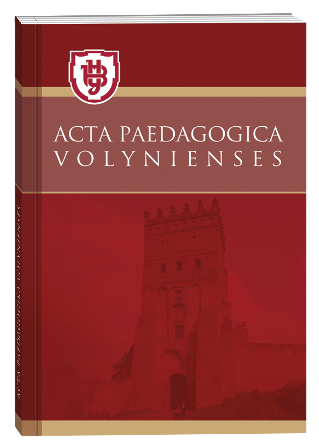ELECTRICAL MODELING OF PUPILS OF GRADES 3–4: EXPERIENCE OF THE LABORATORY OF PRIMARY EDUCATION OF BORYS GRINCHENKO KYIV METROPOLITAN UNIVERSITY
DOI:
https://doi.org/10.32782/apv/2025.1.18Keywords:
technology, engineering, modeling, electrical modeling, electrical circuit, electrical circuit, primary school studentsAbstract
The article highlights the best practices of electrical modeling for pupils of grades 3–4, created by the Laboratory of Primary Education of Borys Grinchenko Kyiv Metropolitan University. The author’s methodology of work on the formation of electrical knowledge, skills and abilities of pupils of grades 3–4 in the classes of integrated courses that implement the technological educational branch of the State Standard of Primary Education is revealed.The purpose of the developed methodology is to give primary school students an idea of the use of electricity in everyday life and at work, to form appropriate general technical skills. In terms of content and structure, the section is designed to meet the requirements of a competency-based approach to technological training of primary school students.In particular, when they get acquainted with the electric circuit, the functional purpose of each element, the specifics of its implementation in various models and toys are considered.The experimental training took place at the primary school No. 333 of the Darnytskyi district of Kyiv. During the experiment, it was determined that the criteria for determining the level of pupils’ ability to electrical modeling are: motivational, cognitive, practical and behavioral. The study proves that primary school children are interested in electrical modeling. They are able to acquire knowledge about the individual parts of an electrical circuit and their functional purpose. Students in grades 3-4 can easily familiarize themselves with the simplest electrical circuits and symbols for individual parts of an electrical circuit. Students are able to quickly read electrical diagrams, carry out simple electrical installation and simple locksmithing.The study found that the level of electrical awareness of primary school students will increase if the integrated courses in the technological educational field of the State Standard of Primary Education include classes on electrical modeling, the methodology of which was created by the Laboratory of Primary Education of Borys Grinchenko Kyiv Metropolitan University.
References
Bliznyuk, M., and O. Debre. Сучасна технологічна освіта у розвинутих країнах Європи. Українська професійна освіта = Ukrainian professional education 8 (2020): 45–50.
Гільберг, Т. Навчально-методичний посібник «Нова українська школа: технологічна освіта у початковій школі» : для пед. працівників. Київ : Генеза, 2021. 160 с.
Коберник, О. Технологічна освіта учнів загальноосвітніх навчальних закладів: концептуальні засади. Modern Information Technologies and Innovation Methodologies of Education in Professional Training Methodology Theory Experience Problems. 23 (2010): 79–85.
Мачача, Тетяна, and Володимир Юрженко. Стратегії розвитку технологічної освіти в середній загальноосвітній українській школі: наскрізність змісту і структури. Український педагогічний журнал. 2 (2017): 58–68.
Мачача, Тетяна Святославівна. Особливості змісту та методики інтегрованого курсу «Дизайн і технології» технологічної освітньої галузі початкової освіти. Початкова освіта : Методичні рекомендації щодо використання в освітньому процесі Типової освітньої програми для 1 класу ; методичні коментарі провідних науковців Інституту педагогіки НАПН України щодо впровадження ідей НУШ в початковій освіті. (2018): 111–118.







